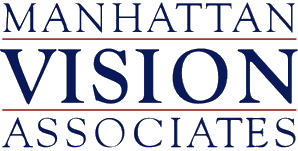Institute For Vision Research, New York City
Our state-of-the-art research facility develops equipment for myopia control, contact lens fittings, spearheads lens research and development, and runs clinical trials of new designs and materials for contact lenses and eyeglasses.

About Us
The Institute for Vision Research was founded by Drs. Ali and Selenow in 1990. Our involvement in such research has kept us at the forefront of technological innovations, enabling us to provide advanced services to our patients well before most other doctors.
Our newly renovated research facility is located in the same building as the Manhattan Vision Associates clinic. The Institute for Vision Research has performed clinical research for myopia-control spectacles.
What is Myopia?
Myopia, also known as nearsightedness, is a significant public health problem, and its prevalence is rising globally at an alarming rate.
When myopia progresses, the retina at the back of the eye “stretches,” leading to a significant risk of blinding diseases such as cataracts, glaucoma, and retinal detachment. Therefore, research aimed at stopping eye elongation and the progression of myopia is of utmost importance.
Participating in Vision Research
We invite you to contact us to determine if you’re a candidate for one of our studies. We offer generous monetary or material compensation for participation. Please contact us for more information.
Articles Published by the Institute
Can Augmented Reality Slow Myopia.L. Baitch, A. Selenow, NR Joshi, I. Samandarova. Review of Myopia Management, March 2021. https://reviewofmm.com/can-aug…
Effect of Short-term Peripheral Myopic Defocus on Ocular Biometrics Using Fresnel “Press-on” Lenses in Human Subjects.R. Kubota, NR. Joshi, I. Samandarova, M. Oliva, A. Selenow, A. Gupta, S. Ali. Accepted for the Association for Research in Vision and Ophthalmology (ARVO), Annual Meeting, 2021.
Visual Performance as a Function of Clear Central Aperture Diameter with a Defocused Myopic Periphery.R. Kubota, NR. Joshi, I. Samandarova, M. Oliva, A. Selenow, A. Gupta, S. Ali, K. Ciuffreda. Optometry & Vision Science, in press, 2021.
Assessment of Visual Performance as a Function of Clear Central Aperture Diameter with a Defocused Periphery: Application to Myopia Control.R. Kubota, NR. Joshi, I. Samandarova, M. Oliva, A. Selenow, A. Gupta, S. Ali, K. Ciuffreda. https://academy2020-aaopt.ipostersessions.com/Default.aspx?s=04-A6-98-16-72-09-7F-6F-87-11-DD-07-3D-15-9D-E1. Presented at American Academy of Optometry, Annual Meeting, 2020.
Effect of Temporary Full-field Defocus on Ocular Biometric Components and Their Subsequent Normalization: A Pilot Study. R. Kubota, NR. Joshi, A. Selenow, A. Gupta, S. Ali, I. Samandarova, M. Oliva, K. Ciuffreda. Presented at Association for Research in Vision and Ophthalmology (ARVO), Annual Meeting, 2020.
Effect of short-term peripheral myopic defocus on ocular biometrics using Fresnel “press-on” lenses in humans. Kubota, R., Joshi, N.R., Samandarova, I., Oliva, M. Selenow, A., Gupta, A., and Ali, S. Scientific Reports1 (2021): 1-7.
Biometric and refractive changes following the monocular application of peripheral myopic defocus using a novel augmented-reality optical system in adults. Kubota, R., Joshi, N.R., Fitzgerald, T.J., Samandarova, I., Oliva, M., Selenow, A., Gupta, A., Ali, S., Mitchell, L.G., Chun, R., and Ciuffreda, K.J. Scientific Reports1 (2022): 1-9.
